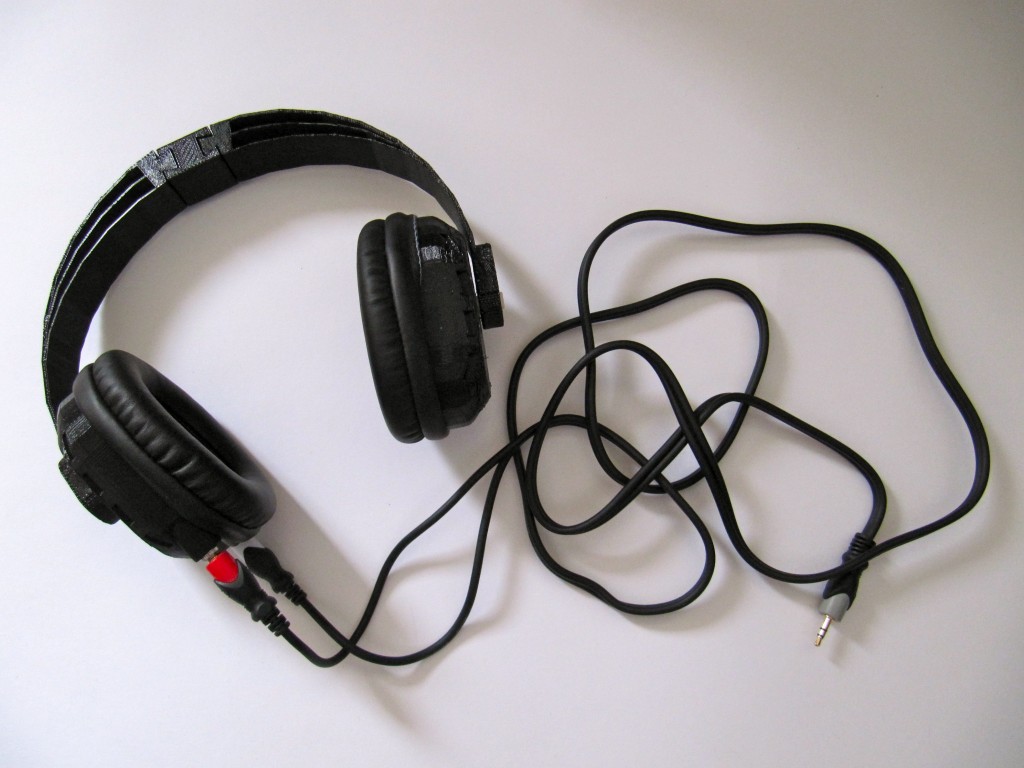Fair warning, this post won’t be about evolutionary clinical psychology per se, but a bit about how a functional, evolutionary perspective can inform technological solutions for better living!
Most of us take our binaural hearing for granted. Having two working ears helps us locate the direction which sound is coming from — our brain quickly does the math when, say, a sound on our left side hits our left ear slightly before it reaches our right ear. People who are deaf in one ear can’t easily localize sounds, and they have trouble keeping up in large group conversations, where the words can come fast and from any direction.
And then there’s another troubling but underappreciated problem that comes with single-sided deafness (SSD): not being able to listen to music properly through headphones. Since most modern sound recordings are split into stereo, with half the sound coming through the left channel and half through the right — and since the sounds are usually distributed differently between the left and right channels for various aesthetic purposes — if you listen to music through headphones, but have impaired hearing in one ear (as do between 8 and 9% of Americans), you’re missing half the sonic picture.
The stereo mixes of 60’s rock (e.g., “I Saw Her Standing There” by the Beatles) often pushed the vocals or drums entirely into one of the two channels, so unilaterally deaf listeners completely miss them, and may think that, say, “Purple Haze” by Jimi Hendrix is an instrumental. When the sound pans back and forth between two channels (e.g., the middle of Led Zeppelin’s “What Is and What Should Never Be”), it makes it sound like the sound is swooping through your head…unless you have SSD, in which case it sounds like the sound is cutting in and out. Tunes like “Long Distance Runaroud” by Yes utilize a different instrument — in this case, a lead guitar — in each channel, creating a sweet double-icious effect thru headphones…again, unless you have SSD.
Short of hearing-aids or procedures to correct or circumvent the hearing loss (which admittedly can make a huge difference!) existing solutions to this problem all involve collapsing the two channels into a single mono channel and listening one-sided through your good ear. So all the sound that most people normally hear through headphones, which sounds like it’s coming from between your ears, will be squished into a tiny space on one side or another. You can’t contain Led Zeppelin in a single tiny speaker! There’s no stereo space, the frequencies can interfere and make the sound crummy, and there’s no panning at all, since all the sound is coming from the same place!
That’s why my team and I have developed the Yuni, a headphone which allows true stereo sound through a single earpiece. The inspiration came one day while sitting in an evolution class and thinking about the evolved, functional design of the ear…in addition to our binaural hearing allowing us localize sound in horizontal space, the shape of the outer ear funnels the sound into our head in a way that facilitates vertical sound localization in space. Why, I thought, couldn’t a headphone be designed that puts one speaker above the ear and another speaker below it, allowing users with SSD to experience stereo sound in an analogous fashion to the way it’s normally done?
 With some help from my engineer friend Mishah and an awesome 3d printing studio [carrythewhat?] replications, I was able to create a functioning prototype of a headphone that does exactly that. Having two separate speakers on a single ear allows you to discriminate between the two channels, detect when the sound pans back and forth (impossible until now through any existing single-sided headphone solution!), and hear your music with true stereo space, with no frequency interference, instead of crammed into a single tiny speaker. The difference is noticeable!
With some help from my engineer friend Mishah and an awesome 3d printing studio [carrythewhat?] replications, I was able to create a functioning prototype of a headphone that does exactly that. Having two separate speakers on a single ear allows you to discriminate between the two channels, detect when the sound pans back and forth (impossible until now through any existing single-sided headphone solution!), and hear your music with true stereo space, with no frequency interference, instead of crammed into a single tiny speaker. The difference is noticeable!
The Yuni is also good for listeners with normal hearing who want to listen to music with a single ear while keeping the other ear open to hear their surroundings. Studio musicians could use it to lay vocal tracks, so they can monitor their own voice with their free ear while listening to the stereo mix (in real stereo!) in the other.
It’s such a simple idea that I was initially tentative to build it and apply for a patent (although I have done so)…shouldn’t somebody else have already marketed this product? If not, then why not? I believe that an evolutionary, functional perspective of human hearing is the key to coming up with the simple notion of placing speakers vertically to make use of our ear’s natural ability to differentiate sounds that are above us and below us…yet another example of how evolutionary thinking can inform technology and better our quality of life.
We are currently wrapping up a Kickstarter campaign to help us get the Yuni to the tens of millions of people worldwide who have unilateral hearing loss. Also, find us on Facebook here.

When will this go on sale? What will the MSRP be? I have SSD and I really MISS stereo!